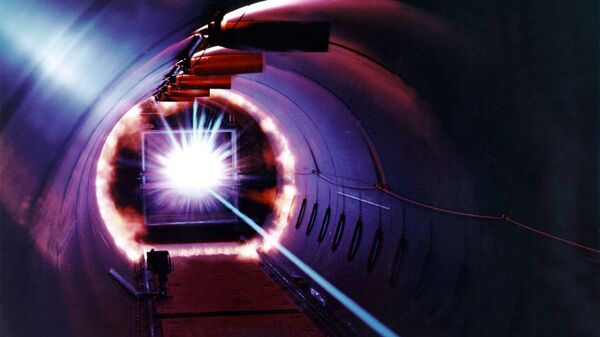In early 2017, the DoD awarded the Defense Advanced Research Projects Agency (DARPA) $45 million to develop a system of sensors and hardware that would enable soldiers to communicate even if the enemy jams the radio waves — something that China and Russia have been testing in recent years, Business Insider noted.
Marines at Camp Hansen on the Japanese island of Okinawa tested the Tactical Line-of-sight Optical communications Network (TALON) on August 21, which "transfers data on a highly secured and nearly undetectable infrared laser, separate from the radio frequency spectrum," a Marine Corps release said.
"We came out to Okinawa because it was one of the harshest humid environments, with highly variable weather on very short time scales," Dr. Linda Thomas, a senior research engineer with the US Naval Research Laboratory, told DVIDS Thursday. "It can go from being nice and sunny to torrential downpours. We are looking at how the system operates and handles these conditions and how we can better fulfill the needs of the future Marine Corps."
The system, which resembles a comically large surveyor's tripod, sends a confined beam of light from a transmitter to a receiver it can "see" directly. Lining up the two devices can be difficult, since unlike a radio, the TALON doesn't broadcast in all directions — but that's also the point, since it makes it much harder to detect and thwart, Breaking Defense noted.
While civilian versions of the technology, which has existed since the 1960s, have a range of about five miles, the DoD has been cagey about giving precise ranges for the TALON system. However, the Okinawa test reportedly reached similar ranges to those of soldiers' radios, which are around 45 miles.
Aside from disruption, which Russian forces demonstrated their ability to do in war games near the Estonian border in 2017, another danger of using radio in combat is that such signals can be followed back to their sources, which then become targets for airstrikes or artillery bombardments, Breaking Defense noted.
"There are adversaries out there with the capability to deny, degrade and disrupt our capabilities," Capt. Kyle Terza from US Army Space and Missile Defense Command said, according to an Army release June 27. "The threat is out there and… we have to be trained and ready to operate without [radio]."



